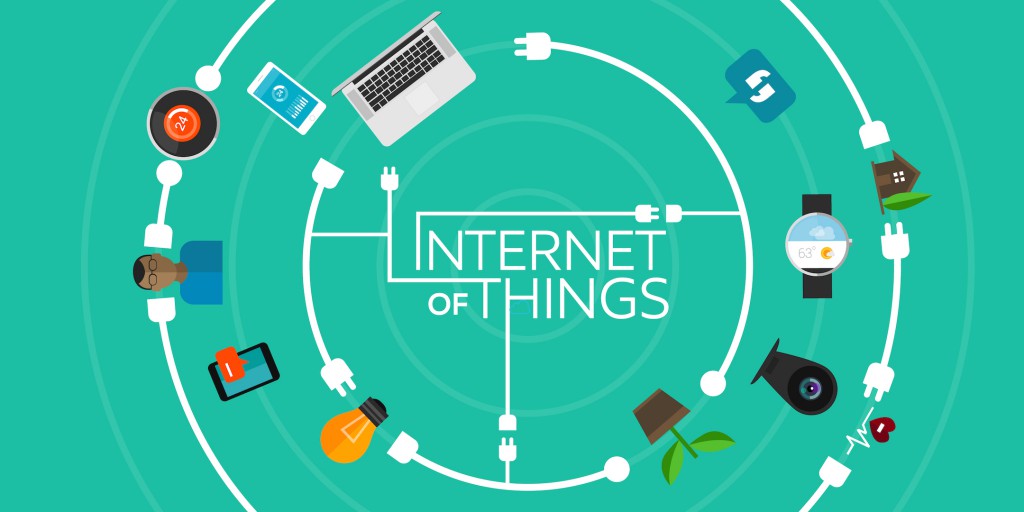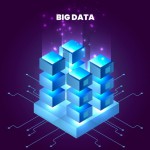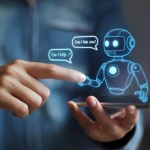What is Next for IoT?
— January 15, 2016Last update: Dec 2024
The Internet of Things (IoT) continues to be one of the most transformative advancements in modern technology. As connectivity, computing power, and storage capabilities expand, IoT is becoming a cornerstone of industries ranging from healthcare to public safety. The consistent growth of IoT points to one clear conclusion: it is not just a passing trend but a fundamental shift in how technology integrates with everyday life. However, this growth brings challenges. To sustain its evolution, IoT now demands the development of new platforms, standardized protocols, updated regulations, and enhanced frameworks to support its expanding ecosystem.
Defining the Internet of Things
Gartner defines IoT as a network of physical objects equipped with embedded technology, such as intelligent sensors, capable of communicating, sensing, or interacting with internal and external systems. These devices generate extensive real-time data that organizations use for diverse applications, from improving household appliances to monitoring industrial equipment. IoT’s rapid adoption is reflected in forecasts like ABI Research’s prediction that by 2020, there would be over 30 billion IP-connected devices worldwide. This scale emphasizes its transformative potential while also highlighting the infrastructural challenges that need addressing.
The IoT Ecosystem’s Growth and Fragmentation
The evolution of IoT has led to a proliferation of diverse solutions. This diversity, fueled by substantial investments in IoT-focused startups, has directed attention toward hardware manufacturing to support these solutions. Many IoT providers build entire technology stacks, encompassing hardware, cloud services, and application layers. However, this approach has resulted in inconsistencies and a lack of standardization across platforms, particularly in cloud services.
As the IoT industry matures, it becomes imperative to establish standardized backend models for common tasks like processing, storage, and firmware updates. Standardized frameworks could foster interoperability and scalability, offering a level of consistency essential for IoT’s long-term viability. Achieving this shift will require collaboration among industry players, but the potential benefits—improved portability and manageability—are undeniable.
Challenges Facing IoT
The journey of IoT is not without obstacles. These challenges span four critical categories: platforms, connectivity, business models, and the emergence of killer applications.
Platforms
IoT platforms must meet the demands of modern design, scalability, and data security. With data streams continuously expanding, platforms need advanced analytics tools capable of handling these data volumes securely. Scalability is another pressing concern, particularly as protocols like IPv6 must be universally adopted to enable seamless communication across billions of devices. Companies such as S3Corp., known for their expertise in web and mobile solutions, could play a vital role in developing robust platforms tailored to diverse IoT applications.
Connectivity
Connectivity forms the backbone of IoT, linking devices across various environments, including homes, vehicles, and cities. Wearables, smart appliances, and industrial systems all rely on uninterrupted communication. In the industrial IoT (IIoT) space, machine-to-machine (M2M) communication drives operational efficiency, highlighting the importance of reliable connectivity. For businesses, achieving seamless connectivity is critical, especially in large-scale implementations like smart cities and industrial automation.
Business Models
The sustainability of IoT depends on clear and profitable business models. Without them, IoT risks becoming another technological bubble. Effective models must cater to vertical markets, horizontal markets, and consumers, addressing their distinct needs. However, regulatory hurdles often complicate these efforts. For instance, Goldman Sachs’ research on IoT highlights regulatory challenges in highly governed sectors like healthcare and transportation. Overcoming these barriers requires strategic planning and innovative approaches to align business goals with compliance requirements.
Killer Applications
IoT’s success hinges on the development of “killer applications” that deliver compelling value. These applications must excel in three core areas: control, data collection, and data analysis. Successful examples include smart home systems that allow users to monitor and adjust their environments remotely and industrial systems that optimize processes through real-time analytics. The absence of widely adopted killer applications remains a significant challenge, but it also presents an opportunity for developers and companies to innovate.
The Role of Sensors in IoT
Sensors are the foundational elements of IoT, enabling physical objects to collect and transmit data. These components measure changes in temperature, position, light, and other variables, transforming objects into active participants in the digital ecosystem. Advances in miniaturization, wireless connectivity, and battery life have amplified the capabilities of sensors, paving the way for their widespread adoption.
Investments in sensor technologies are a strong indicator of IoT’s progress. According to PwC’s 6th Annual Digital IQ Survey, IoT adoption is well underway, with businesses recognizing its potential to drive efficiency and innovation. Companies specializing in software outsourcing can contribute significantly by integrating sensor-driven solutions into IoT ecosystems, supporting industries in their digital transformation journeys.
The Future of IoT
IoT is poised to transform physical environments into interconnected systems of information, enriching lives and reshaping industries. From refrigerators and parking spaces to entire urban infrastructures, IoT brings everyday objects into the digital fold. This trend positions IoT as a multi-trillion-dollar industry with limitless potential. The emergence of models like “IoT as a Service” could redefine how businesses and consumers access IoT capabilities, offering scalable and flexible solutions similar to existing “as-a-service” technologies.
To better understand IoT’s future, let’s explore four critical aspects shaping its development and sustainability.
IoT Companies and a Circular Economy
IoT companies are playing a significant role in fostering a circular economy by promoting energy efficiency, waste minimization, and resource optimization. Connected devices enable systems to be feedback-driven and responsive, leveraging data to support sustainable practices. Achieving this requires innovations in predictive maintenance, lifecycle extension, and resource reuse.
Predictive maintenance, for instance, replaces the traditional “break-fix” manufacturing model by addressing issues before they occur, reducing unplanned downtime. Additionally, IoT data can enable the remanufacturing or recycling of products by providing detailed insights into asset conditions and usage histories.
A compelling example is Michelin’s integration of sensors in tires to track wear patterns. This technology not only informs customers about optimal rotation or replacement times, enhancing safety and cost efficiency, but also allows Michelin to pivot to a tire-leasing model. By owning the tires and relying on sensor data for maintenance, Michelin gains a vested interest in maximizing tire durability. This approach aligns with the principles of a circular economy, showing how IoT innovation can redefine business models for sustainability and profitability.
IoT Security Improvements
As IoT adoption accelerates, security remains a pressing concern. Developing IoT systems demands expertise across hardware, software, and cloud infrastructure, creating significant challenges for businesses venturing into this space. Many companies, eager to release products quickly, often overlook robust security measures. However, as IoT’s reach extends into sensitive areas—such as connected vehicles and baby monitors—this negligence could have severe consequences.
The increasing number of IoT devices expands the attack surface, heightening the risk of cyberattacks. Recent surveys highlight that for many consumers, security is a higher priority than the cost of IoT products. Addressing this concern is essential for building trust and ensuring user control over their data.
The future of IoT hinges on companies improving privacy measures and addressing vulnerabilities to maintain user confidence. Implementing transparent data practices and adopting industry-standard security protocols are vital steps in establishing IoT as a safe and reliable ecosystem. For instance, companies offering software outsourcing services, such as Vietnam-based S3Corp., could support enterprises in creating secure, scalable IoT solutions tailored to meet consumer and business needs.
Artificial Intelligence and IoT
IoT generates vast amounts of data, but its value lies in how effectively this data drives actionable insights. Artificial Intelligence (AI) is the key to unlocking this potential. AI enhances IoT’s utility by contextualizing data, enabling intelligent actions across varying levels of complexity.
At its most basic level, AI helps predict and mitigate risks using real-time data, such as forecasting equipment breakdowns. Intermediate applications include prescriptive measures like vehicles correcting course when veering off lanes or sensors detecting potential railway track failures. Advanced AI applications deliver adaptive responses, such as insulin pumps adjusting delivery levels based on blood glucose sensor readings.
AI-driven IoT applications improve risk management, efficiency, and decision-making. They are pivotal in areas like fraud detection, personalized insurance premiums, and predictive maintenance, reducing downtime and optimizing costs. For IoT to realize its full potential, businesses must integrate AI technologies, creating systems capable of intelligent, autonomous operations that benefit consumers and industries alike.
Decentralized IoT Networks
The increasing reliance on centralized cloud platforms, such as AWS and Azure, presents challenges for IoT. These cloud providers, while efficient, create single points of failure that can disrupt connected systems during outages or attacks. Additionally, as cloud platforms scale, they become more attractive targets for cyberattacks, raising concerns about data security and system stability.
To address these vulnerabilities, decentralized approaches like blockchain offer promising alternatives. Blockchain distributes transactions across network nodes rather than relying on a central server, enhancing resilience. However, its high computational requirements pose challenges for IoT devices with limited processing power.
The solution may lie in a hybrid model, reducing dependence on cloud platforms by leveraging edge computing. Processing data closer to its source allows faster decision-making and reduces cloud infrastructure strain. Businesses will need to evaluate when to process data locally at the edge and when to send it to the cloud for centralized analysis. This balance will be crucial as IoT expands, ensuring systems remain efficient, scalable, and secure.
IoT’s future hinges on innovation across sustainability, security, intelligence, and infrastructure. Companies advancing circular economy models demonstrate IoT’s potential to reduce waste and maximize resources. Addressing security concerns is vital for building trust and ensuring widespread adoption. AI integration transforms IoT data into actionable insights, driving intelligent and adaptive systems. Finally, decentralizing networks reduces reliance on vulnerable cloud infrastructure, paving the way for robust, scalable IoT systems.
In conclusion, the future of IoT will depend on addressing its current challenges while fostering innovation across platforms, connectivity, and applications. Companies with expertise in IoT development and software outsourcing, such as S3Corp., are well-positioned to lead this charge by providing tailored solutions that drive growth and adoption. By focusing on standardization, interoperability, and innovative applications, IoT can continue its trajectory toward becoming a ubiquitous and indispensable part of daily life.





